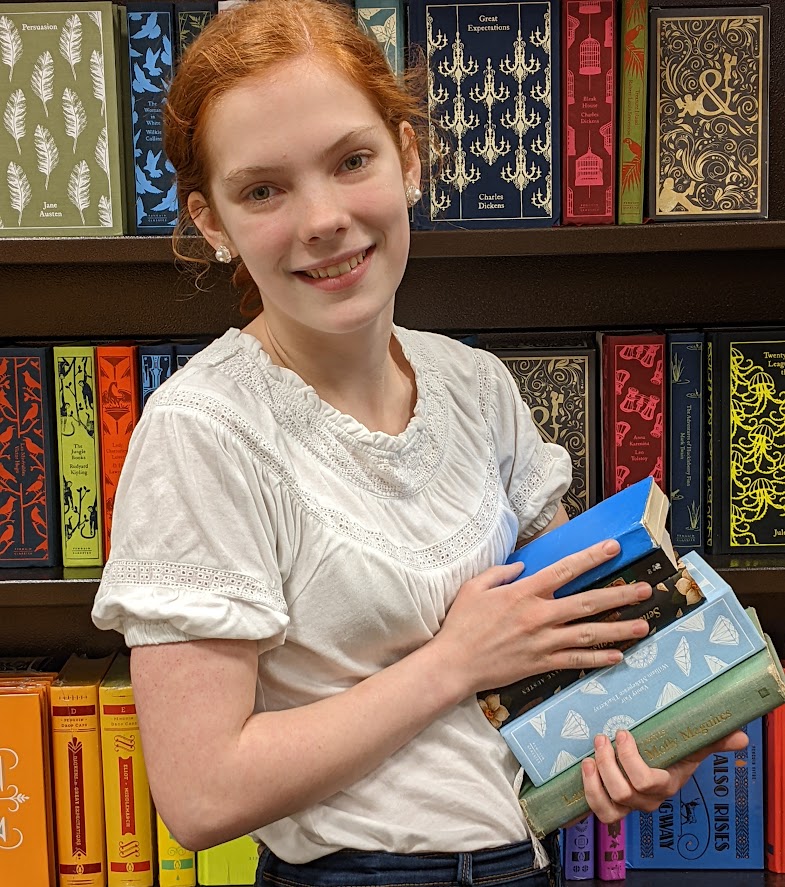Some characters are just plain awesome. They’re memorable, we root for them, and they become impossible to forget. They generate so much interest around the plot, setting, and story just by being who they are.
But others seem like cut-outs. They aren’t necessarily cliched, but they speak and act just like the other characters in their genre. Readers might even relate to them deeply. Yet somehow they aren’t unique, they don’t stand out, and could be easily mistaken for another character in the story. And it doesn’t really matter that readers relate to those characters if they can’t distinguish them from each other.
And these characters aren’t confined to a certain genre, story, or piece of media. They can show up anywhere, often even in stories that mainly have the amazingly vibrant characters described above.
But why? What do some of these characters have that others are missing? What sets them apart, and what causes such a great disparity between them? More importantly, how can we, as writers, make sure to avoid them?
The Map of Tiny Perfect Things is one movie that filled their entire cast with the memorable characters described above.
The Map of Tiny Perfect Things
The Map of Tiny Perfect Things is a summer romance following Mark, a seventeen year old growing up in small-town America. He’s been trapped in a time loop for weeks, but hasn’t had the motivation yet to break it. With his upbeat attitude and his naturally optimistic outlook, he’s pretty content with the new opportunities the repetition of the same day has given him.
Each morning he wakes up to the same alarm, which sends him sliding downstairs to a perfectly timed entrance to the breakfast table, where his parents and snarky younger sister, Emma, are already milling about. He grabs his toast as it pops out of the toaster, greets his dad, leaves a sarcastic remark for his younger sister, and kicks his bike off toward the pool. At the pool, he can easily dodge having to attend Emma’s soccer game, he has a dozen ways to impress his crush with his impeccable timing, and (most importantly of all) he doesn’t have to think about the conversation brewing at home every day.
His dad quit his job to write a book on the Civil War as a way to cope with his midlife crisis. Now he wants to live through Mark, and attempts to get him alone each day to discuss his future. Mark has no idea what he wants to do, and no interest in being lectured by his deadbeat dad about his career.
But he can’t avoid the lecture forever. Finally he reaches a breaking point when, once again, his father is able to catch him before the day resets. Mark boils over, storms out of his dad’s office, and finds himself in Emma’s room, right when she’s scheduled to practice violin, like she’s done every single day for months. She startles him and he finds himself ranting — he’ll never get to grow up, and even if he did, his father is too controlling to let him do what he really wants. Instead his Dad is stuck in a midlife crisis trying to live out his dreams through his children while he writes a book on the Civil War that no one will ever read. And that’s when Emma forces Mark to realize something that he had never thought of.
His Dad didn’t quit to write his book, he was fired and too ashamed to admit it. He isn’t having a midlife crisis, and he wants to help Mark find his future so that he doesn’t end up discovering it too late. As Emma talks, Mark realizes that what he assumed about her isn’t true, either. She’s snarky because she looks up to him, and he’s too self-absorbed to even attend one of her soccer games. When he asks Emma how she’s realized all this, she comments,
“It’s because I think of people other than myself. You should try it some time.”
And it finally hits Mark. He finally understands that the time loop isn’t about him and that it isn’t his story. It’s all about someone else, and without his selfishness in the way, he might finally be able to change things.
Combine Conflicting Traits In Your Characters
The characters in this story are so vivid because of something that many authors don’t realize, which is that seemingly conflicting traits often fit together far more easily than you would expect.
For instance, Mark doesn’t seem to have much character development to go through in the beginning of the movie. He doesn’t have any glaring flaws, and he seems almost completely content. We often assume that perfectly happy people can’t grow any more than they already have, but that isn’t the case. On the other hand, when we think of self-centered people, we often think of characters that can’t get two words out without complaining about how challenging their life is.
But these traits actually fit together perfectly. Mark is self-centered because of his happiness. He’s so enamored with his own contentment, so glad he won’t let even a time loop beat him, that he never stops to think about others. He thinks he has his life in control — because his life is all he thinks about. The moment he stops to look from another person’s perspective, he realizes how much he still has to grow.
Many authors set out to write characters based on a certain trait. They take their bookishness, their thirst for adventure, their brashness, or their happiness, and build a character off of that. That isn’t bad, but it ultimately sets up characters that are yet another faded version of a tired old archetype. The “bookish” character becomes another version of Hermione from Harry Potter. The “happy” character becomes sweet and innocent with a heart of gold — a variation of Beth March from Little Women. Whatever that one trait is, you find dozens of other characters across literature that are almost indistinguishable.
The reason for this is that authors rarely slow down and ask themselves what seemingly opposing characteristics could go quite well together. Belle from Beauty and the Beast is a great example of this. She’s bookish and highly intelligent, yet still expressive, gentle, and selfless. She’s far from being a typical know-it-all book worm, or the socially-awkward-nerdy-introvert. And most of all, she’s memorable because the writers combined traits that are rare to find together.
Basing a character off of a certain trait is awesome, and often creates very compelling characters. But your characters should be more than just the essence of that trait, with no nuance or variation. Maybe even combine traits, like a brash bookworm, or an incredibly sweet character who longs for nothing more than adventure to prove her worth.
This technique allows authors to craft brilliant, memorable characters that are incredibly unique. It creates unexpected character arcs, dynamic interactions, and powerful themes through simply combining ideas that haven’t been tried before. So go combine some unusual traits! The opportunities are endless.



What stories have you read with awesome, memorable characters? What “conflicting traits” did the writer combine to craft their personalities? And how was the article? Too sweet? Too sour? Just right? Comment below and let us know!


Hi! My name is Mara, and I’m a Christian artist, violinist, and blogger. I remember the day that I decided that I would learn something new about what makes a good story from every book I picked up — whether it was good, bad, or a mixture of both. I use this blog as a way of sharing some of the tips and tricks I’ve learned, and highlight which books, cartoons, and movies have taught me the most about writing an awesome story.

